A Comprehensive Guide to the American Crow
The American crow, Corvus brachyrhynchos, is a familiar sight across much of North America. More than just a common bird, the crow is a remarkably intelligent creature, deeply interwoven into the ecosystems it inhabits and holding a significant place in human culture. This guide delves into the fascinating world of the American crow, covering everything from its natural history and behavior to its interactions with humans and its role in the environment.
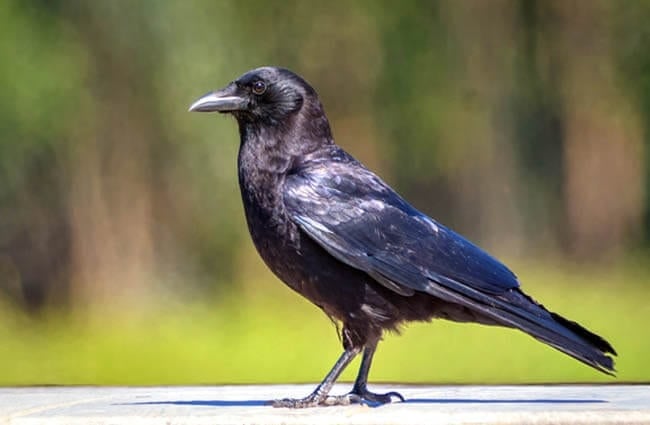
Basic Information and Identification
American crows are large, all black birds easily recognized by their size, glossy plumage, and distinctive “caw” sound. Adults typically measure between 17 and 21 inches in length, with a wingspan of around 33 to 37 inches. While they appear entirely black, closer inspection often reveals a subtle iridescent sheen, particularly in sunlight. Young crows initially have duller plumage but quickly develop the characteristic glossy black feathers as they mature. A key identifying feature is the shape of the bill; American crows have a relatively long, straight bill compared to some other crow species.
Habitat and Distribution
Highly adaptable, American crows thrive in a wide range of habitats, from open woodlands and agricultural fields to suburban gardens and urban parks. They are found throughout most of North America, extending from Alaska and Canada, south to Florida and Mexico. They prefer areas with a mix of open and wooded spaces, providing foraging opportunities and suitable nesting sites. The presence of human development often benefits crows, providing a readily available food source and nesting locations.
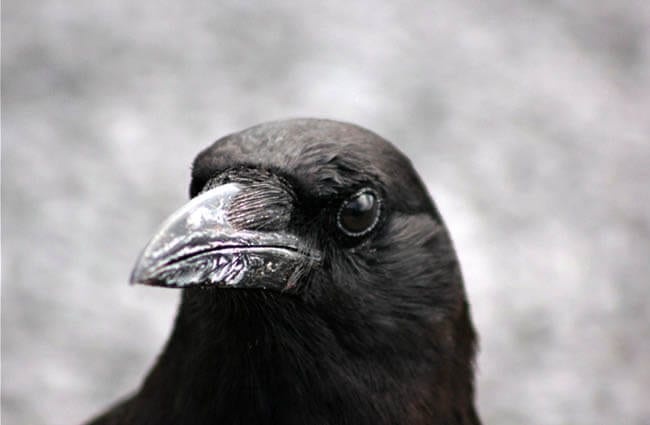
Diet and Foraging Behavior
American crows are omnivorous, possessing a remarkably varied diet. They consume everything from insects, seeds, and berries to small mammals, fish, and carrion. They are opportunistic feeders, readily taking advantage of whatever food source is most readily available. Crows are known for their intelligence and problem‑solving skills when it comes to foraging. They will use tools, such as sticks or stones, to extract insects from crevices or open tough nuts. They also engage in caching behavior, storing food for later consumption, demonstrating remarkable memory skills.
Evolutionary History
The American crow belongs to the family Corvidae, which includes crows, ravens, jays, and magpies. Corvids are considered among the most intelligent bird families, exhibiting complex cognitive abilities. The evolutionary history of the American crow can be traced back millions of years, with fossil evidence suggesting that crow‑like birds existed during the Eocene epoch. Over time, various crow species diverged, adapting to different ecological niches. The American crow, as a distinct species, likely emerged during the Pleistocene epoch. Its close relatives include the fish crow and the northwestern crow.
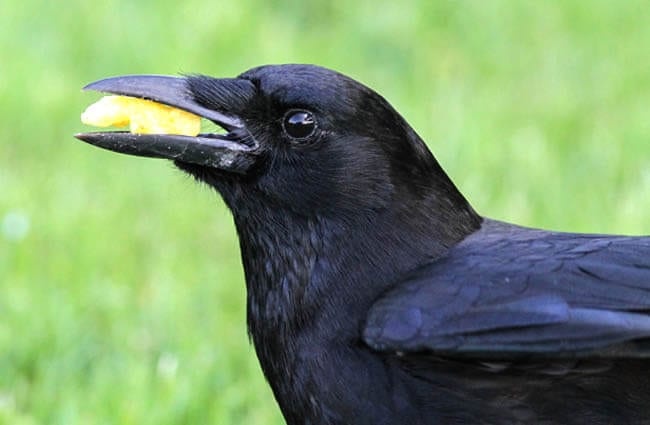
Mating and Reproduction
American crows are generally monogamous, forming long‑term pair bonds that often last for life. They typically begin breeding in the spring, with mating rituals involving displays of preening, calling, and food offering. Crows construct large, cup‑shaped nests made of twigs, sticks, and other materials, usually placed high in trees. The female lays between 3 and 6 eggs, which she incubates for around 18 to 20 days. Both parents participate in feeding and caring for the young, which fledge from the nest after about 30 to 35 days. Young crows often remain with their parents for several months, learning essential survival skills.
Social Behavior and Communication
American crows are highly social birds, often gathering in large flocks, particularly during the non‑breeding season. These flocks can consist of hundreds or even thousands of individuals. Crows communicate through a variety of vocalizations, including the familiar “caw,” as well as a range of other calls, clicks, and rattles. They also use body language and visual displays to communicate with each other. Crows are known for their cooperative behavior, working together to defend their territory, raise their young, and forage for food. They also engage in “mobbing” behavior, where a group of crows harasses or attacks a potential predator.
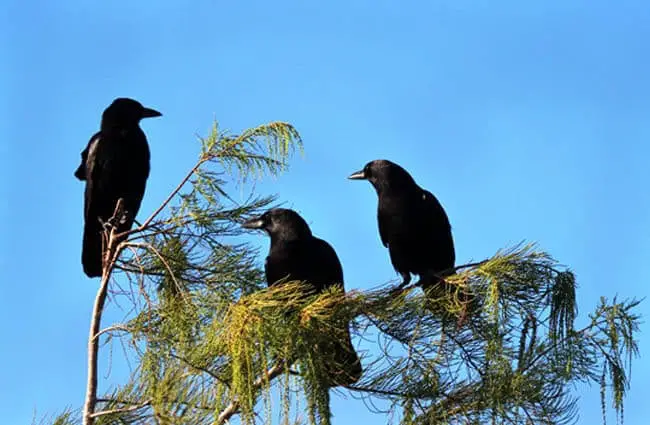
Ecological Role and Interactions with Other Animals
American crows play an important role in their ecosystems. As omnivores, they help to control populations of insects and other invertebrates. They also disperse seeds, contributing to plant propagation. Crows are often scavengers, cleaning up carrion and helping to prevent the spread of disease. They interact with a variety of other animals, including other birds, mammals, and reptiles. Crows are sometimes preyed upon by hawks, owls, and other predators. They also compete with other birds for food and nesting sites. They frequently form commensal relationships with other animals, benefiting from their presence without causing them harm.
American Crows and Human Culture
American crows have a rich history of symbolism and significance in human culture. In some cultures, crows are seen as symbols of intelligence, wisdom, and magic. In others, they are associated with death, misfortune, and the supernatural. Crows appear in folklore, mythology, and literature around the world. They are often depicted as tricksters, messengers, or omens. Crows have also been used in art, music, and other forms of creative expression. Their striking appearance and distinctive vocalizations have captivated human imagination for centuries.
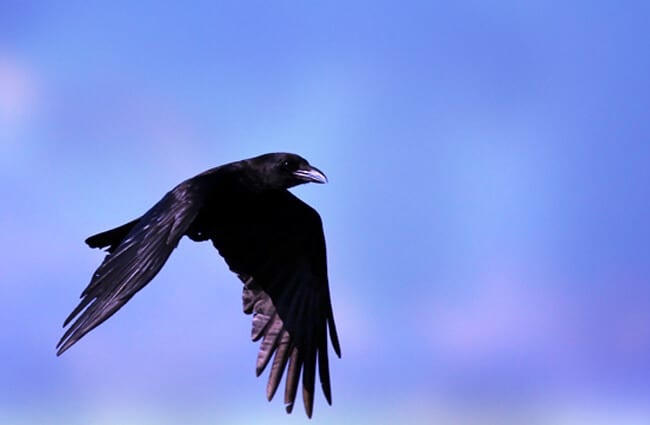
Interactions with Humans
American crows often come into contact with humans, particularly in urban and suburban areas. They are attracted to human settlements by the availability of food, such as garbage, bird feeders, and agricultural crops. Crows can sometimes become pests, damaging crops, raiding gardens, and creating a nuisance with their noise and droppings. However, they can also be beneficial, helping to control insect populations and cleaning up carrion. It is important to avoid feeding crows, as this can encourage them to become dependent on humans and create problems. Respecting their natural behavior and maintaining a safe distance is crucial for peaceful coexistence.

Interesting Facts
- American crows have been observed using tools, such as sticks and stones, to extract insects from crevices.
- Crows can recognize individual human faces and remember those who have treated them kindly or unkindly.
- They are capable of solving complex problems and exhibiting remarkable cognitive abilities.
- Crows engage in play behavior, such as sliding down snow‑covered roofs and playing with objects.
- They have a complex social structure and communicate through a variety of vocalizations and body language.
- Crows often gather in large roosts during the winter months, sometimes consisting of thousands of individuals.
- They have a relatively long lifespan, with some individuals living for over 15 years in the wild.
The American crow is a truly remarkable bird, possessing intelligence, adaptability, and a complex social life. From its ecological role to its cultural significance, the crow continues to fascinate and inspire. Understanding this intelligent species is essential for appreciating the intricate web of life that surrounds us.

![Red Angus Closeup of a beautiful Red Angus cowPhoto by: U.S. Department of Agriculture [pubic domain]https://creativecommons.org/licenses/by/2.0/](https://animals.net/wp-content/uploads/2020/03/Red-Angus-4-238x178.jpg)




![Red Angus Closeup of a beautiful Red Angus cowPhoto by: U.S. Department of Agriculture [pubic domain]https://creativecommons.org/licenses/by/2.0/](https://animals.net/wp-content/uploads/2020/03/Red-Angus-4-100x75.jpg)

